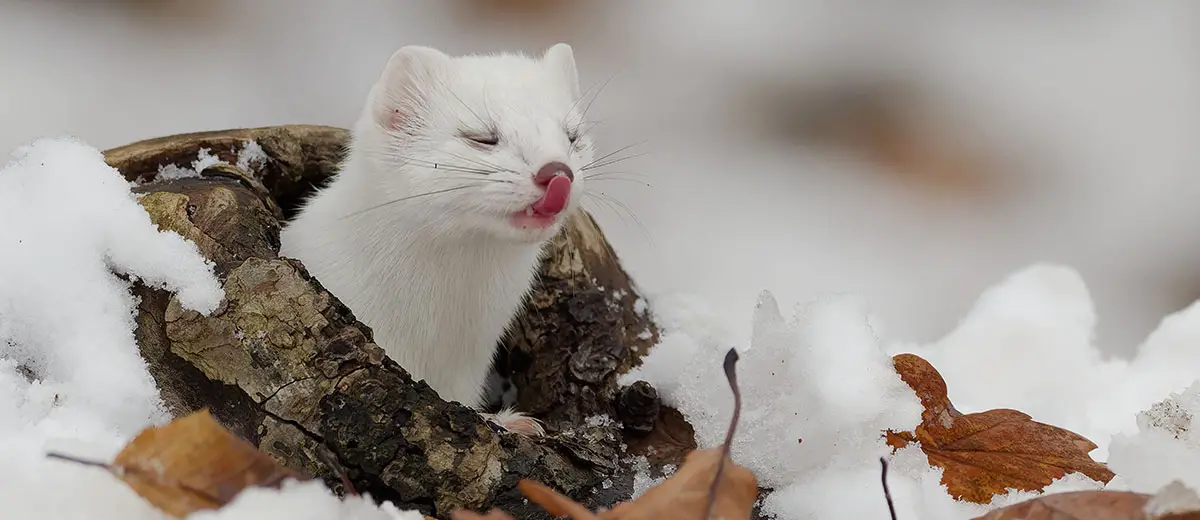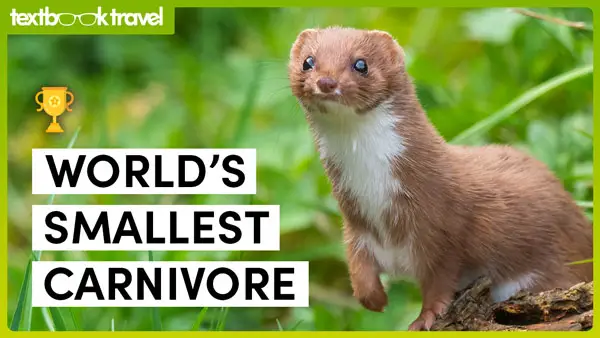The Musteloidea Superfamily ALL 8 Weasel Subfamilies & 3 Closest Relatives
Mustelidae contains 8 subfamilies and roughly 60 species including weasels, martens, otters, badgers and the wolverine. It is the largest family within the order Carnivora and is part of Musteloidea, a superfamily of weasels—which sounds awesome—that also contains the red panda, raccoons and skunks. Interestingly, this superfamily is most closely related to seals, then bears and then dogs. In this guide, we’ll explore each subfamily, where they’re located and the species found therein. Let’s dive in!
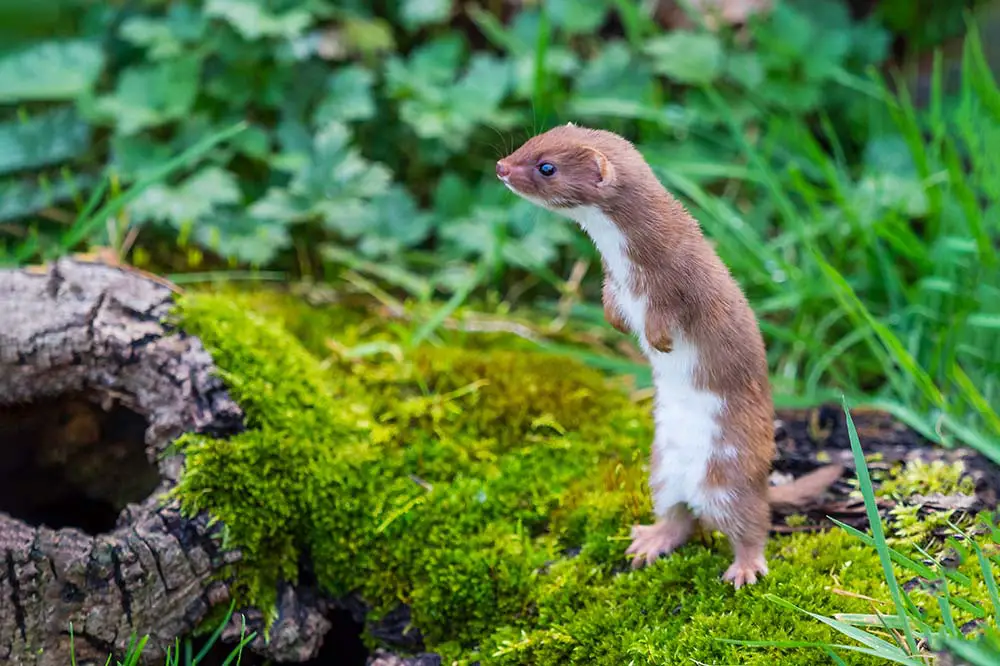
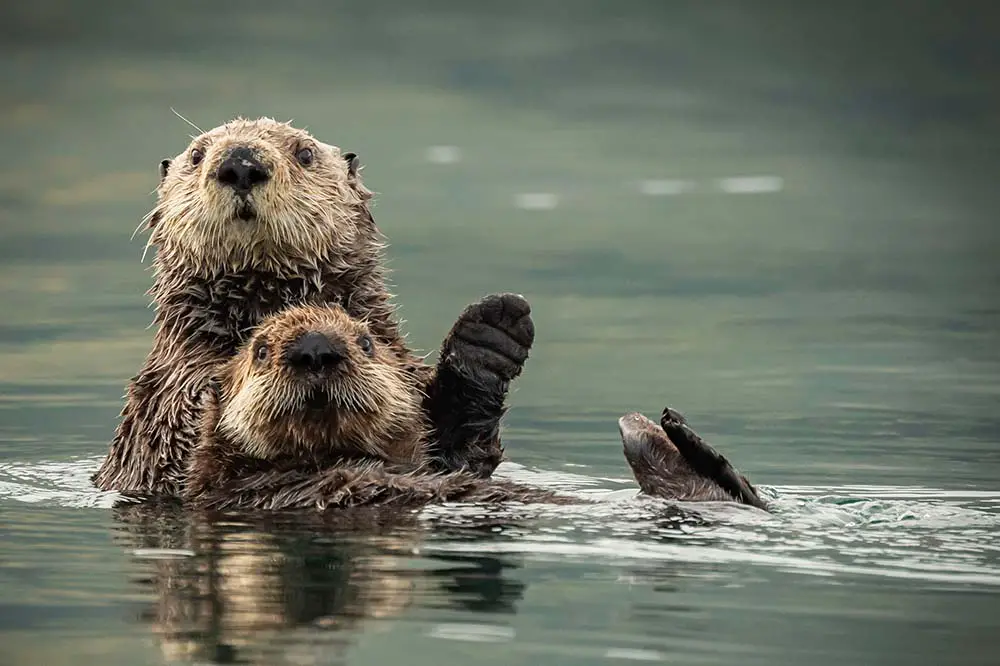
Left: The smallest mustelid, the least weasel | Stephan Morris/Shutterstock & Right: the largest mustelid, the sea otters in Kodiak, Alaska | Laura Hedien/Shutterstock
Contents
- Mustelinae | Stoats, Ferrets & Mink
- Lutrinae | Otters
- Ictonychinae | Marbled Polecat & Grison
- Guloninae | Wolverine & Martens
- Helictidinae | Ferret badgers
- Melinae | European Badger & Hog Badger
- Mellivorinae | Honey Badger
- Taxidiinae | American Badger
- Procyonidae | Racoons, Olingos & Coatis
- Ailuridae | Red Pandas
- Mephitidae | Skunks
01 Mustelinae | Stoats, Ferrets & Mink
In addition to being one of the most charming animals on the planet, the stoat, otherwise known as the short-tailed weasel or the Eurasian ermine is the root of this entire superfamily, otherwise known as the type species. It is part of the type genus, Mustela after which the naming of the containing taxonomic ranks is based.
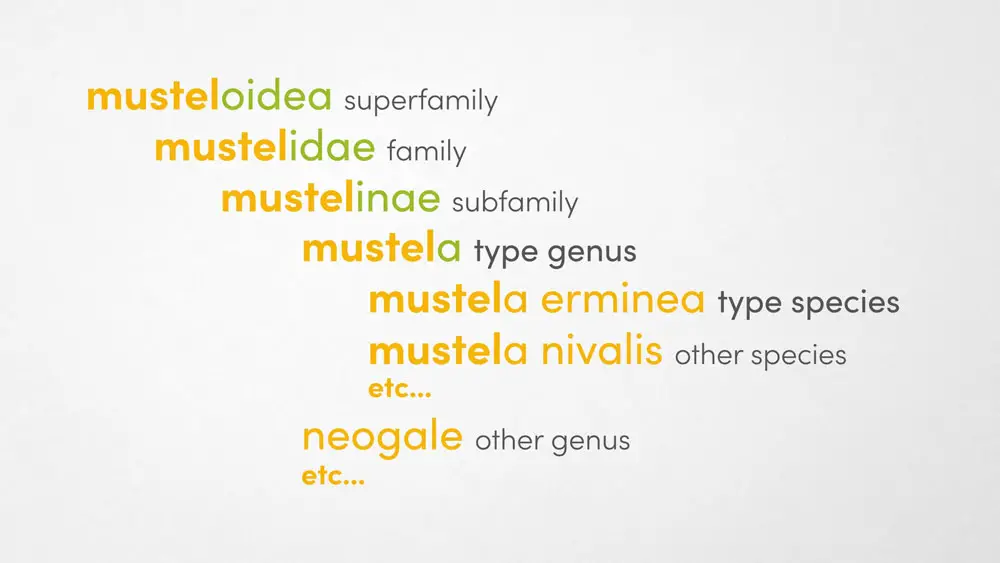
Mustela is the largest genus in the entire superfamily, containing 16 species, all of which are generally referred to as weasels but also includes polecats, stoats, ferrets and mink. Weighing just 30 to 100 grams (1-3.5oz), the smallest of this genus is the least weasel. Referred to as the common weasel, these tiny creatures are also the smallest mustelid and the smallest carnivore. They have a very similar range to the stoat, being found throughout much of the northern hemisphere, as far south as Northern Africa and central China. The least weasel personifies a mustelid, with a long slender body and relatively short legs. In the northern parts of their range, their coat turns pure white in the winter to adapt to their snowy environment. This colour change happens due to a hormonal reaction in response to a reduction in daylight hours and also occurs in other animals such as the ptarmigan and the snowshoe hare. Other species in the genus include the Steppe polecat, the European Mink and the Black-footed ferret.
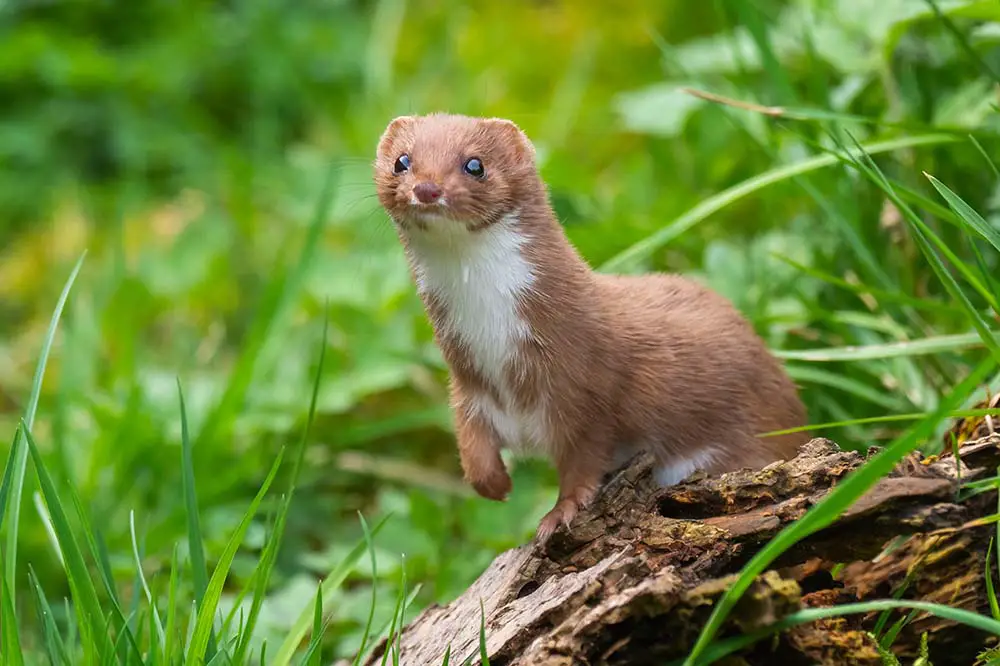
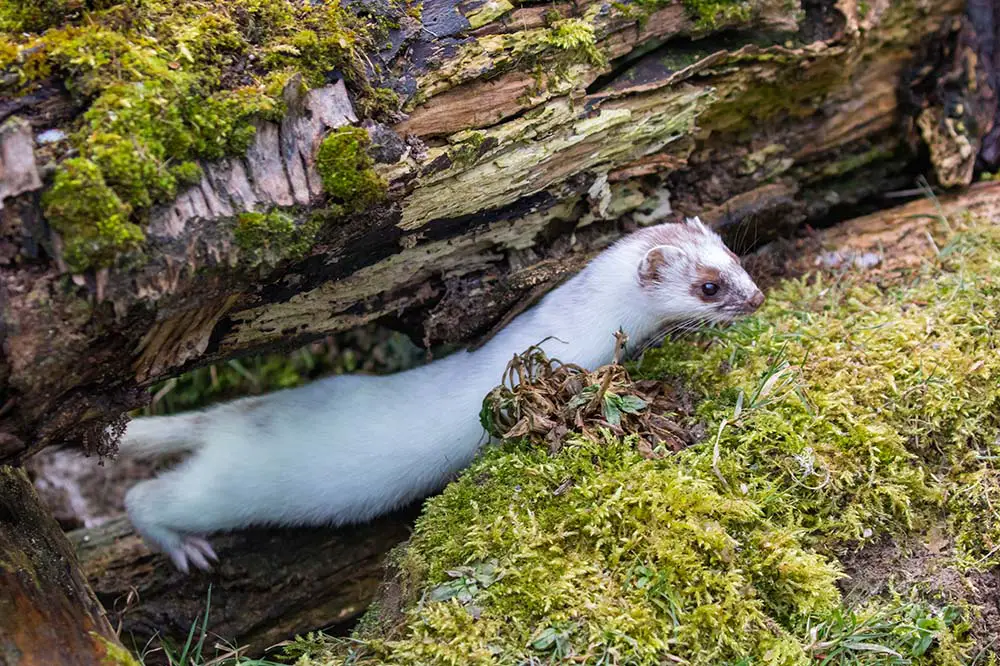
The least weasel in summer (left) and winter (right) coats | Stephan Morris/Shutterstock
02 Lutrinae | Otters
Lutrinae is the second-largest subfamily containing 13 species. Its members are referred to as otters and are the closest relatives to the weasels in Mustelinae. Like weasels, otters exhibit long slender bodies and short limbs. They thrive in the water; most species have webbed feet to aid with swimming and feed mainly on fish and invertebrates. 11 of the species are thought of as semiaquatic and live in freshwater ecosystems with the remaining two species of sea otter being classified as marine. The Eurasian otter, also known as the common otter, has a very large range encompassing almost all of Europe below the taiga belt, parts of the Middle East and Russia and into Southeast Asia.
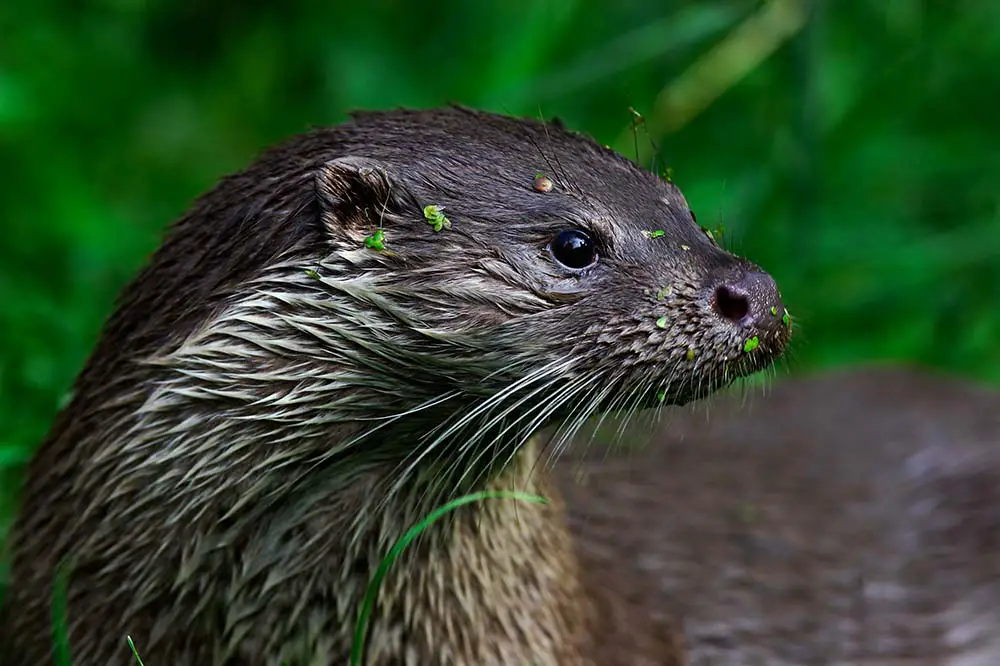
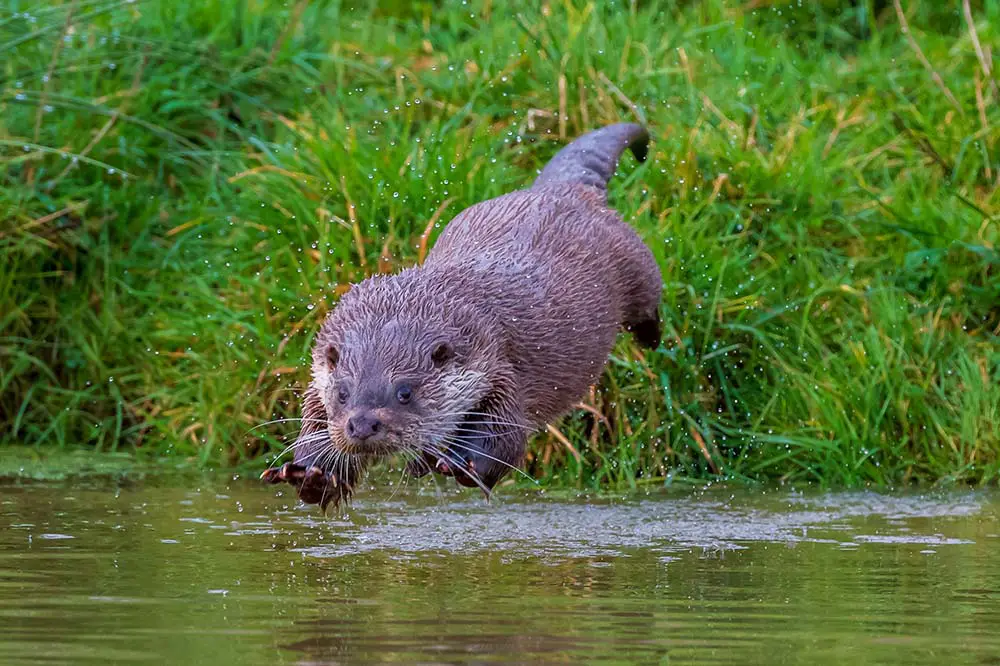
Left: Eurasian otter portrait | Ondrej Prosicky/Shutterstock & Right: Male Eurasian Otter | Alec Taylor/Shutterstock
As is usually the case, the marine species of this genus are much larger than their freshwater cousins; the sea otter is the largest mustelid, weighing up to 100lbs (45kg) and measuring up to 5ft long (1.5 meters). They are well known for floating on their backs, which they do for several reasons; sea otters will adopt this position to sleep or rest in addition to using their bellies as a surface to pry open crustaceans and the other animals they consume. Another interesting species is the giant otter, found in South America. Although they can be a similar length to sea otters (including their tail, which is longer), they are roughly half the weight, weighing up to around 50lbs (52lbs / 24kg).
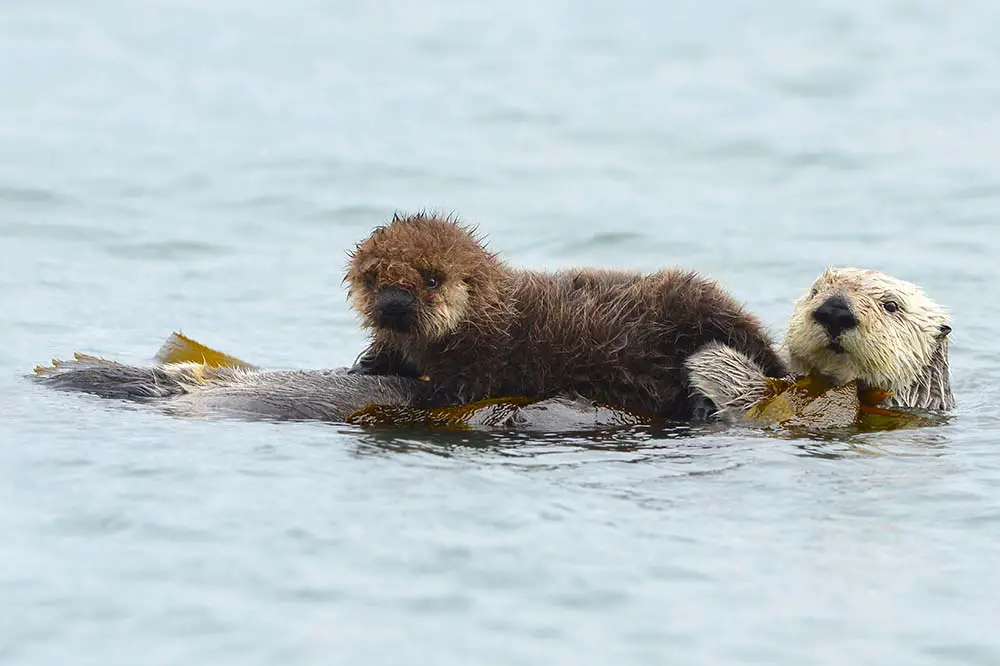
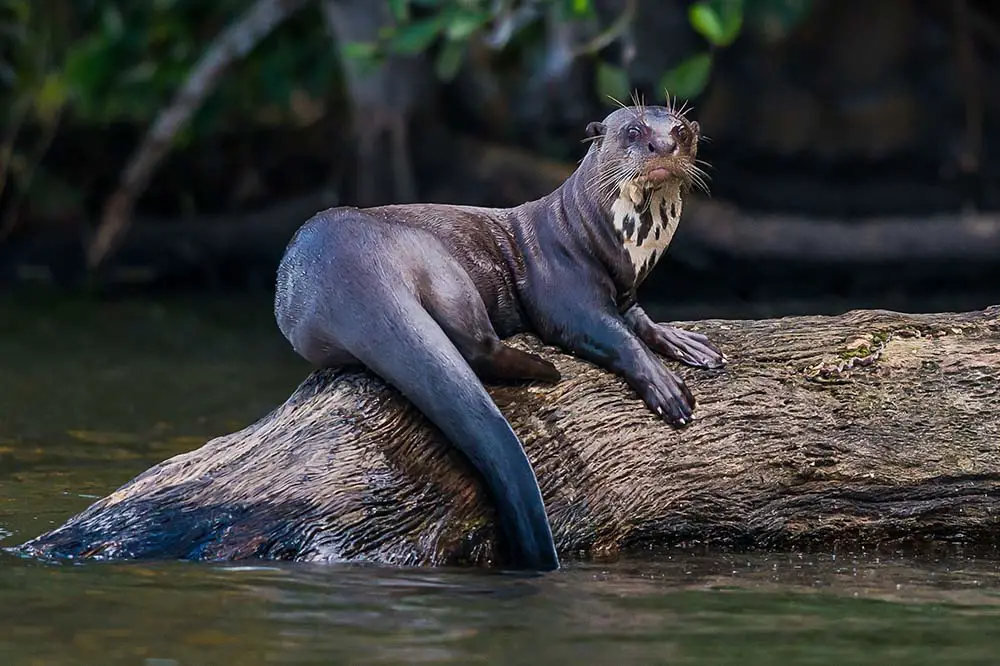
Left: Adult sea otter with infant | worldswildlifewonders/Shutterstock & Right: Giant otter standing on log in the Peruvian Amazon | OSTILL is Franck Camhi/Shutterstock
03 Ictonychinae | Marbled Polecat & Grison
Ictonychinae is a smaller subfamily and contains some of the lesser-known but no less incredible species including the marbled polecat and two species of grison. The marbled polecat is found on the steppes and arid areas of Central Asia, the Middle East and Europe. Like all mustelids, this colourful creature has well-developed scent glands that allow it to emit a pungent aroma, which is used both for marking territory and as a defence mechanism. They exhibit a very unique colouration with a white and black striped face and a blotched yellow body.
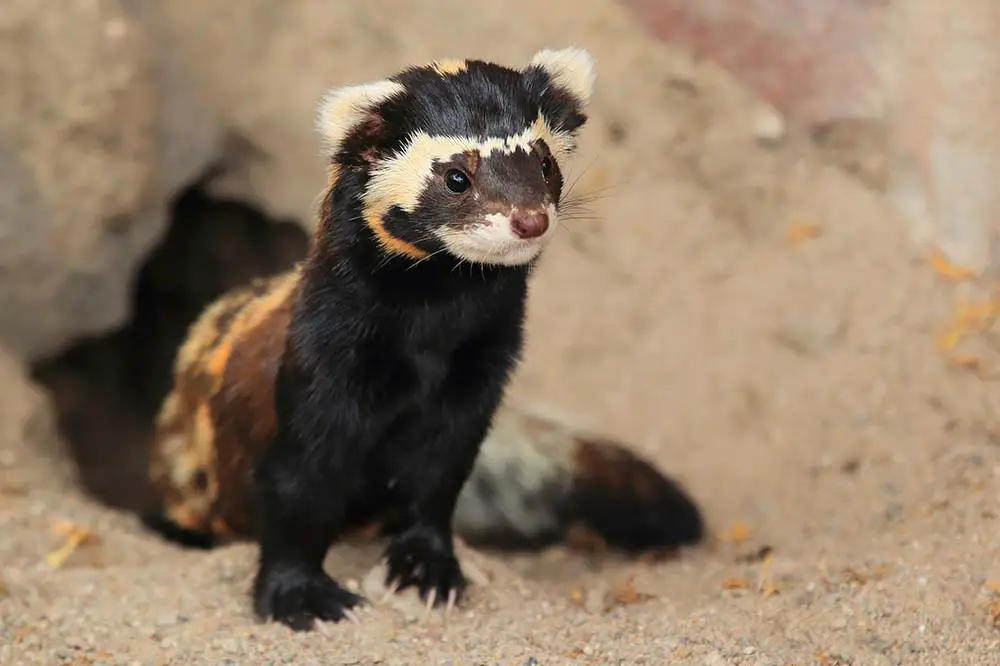
The grison genus contains two species, which are known as South American wolverines. The greater grison is found throughout Central America and the northern half of South America and the lesser grison, which is found at the Southern end of the continent. Both species have a dark face and belly and a lighter-coloured back with the lesser grison exhibiting a more sandy-yellow colour.
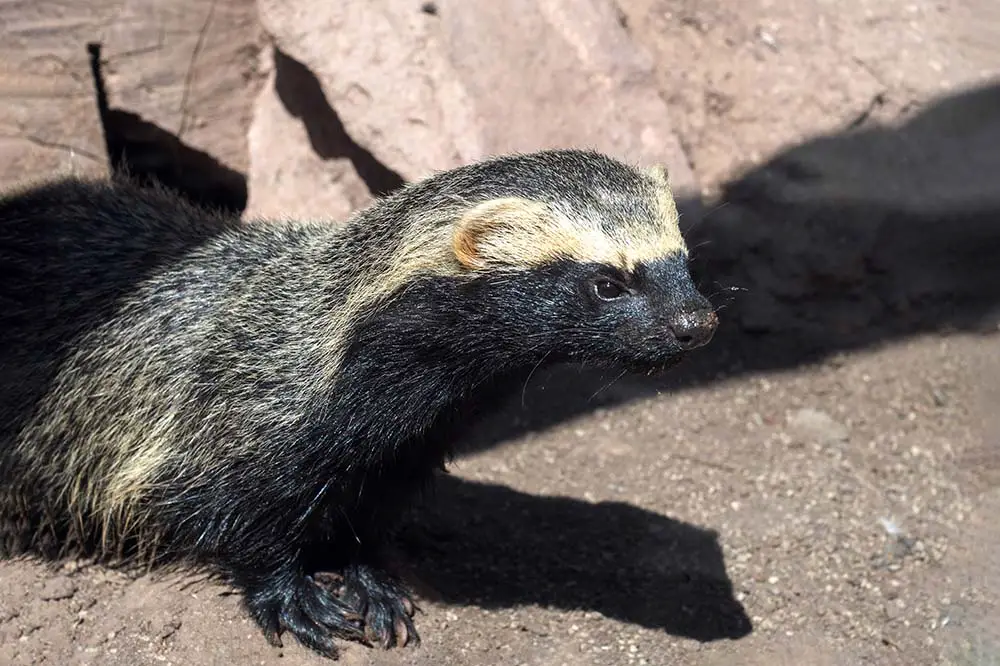
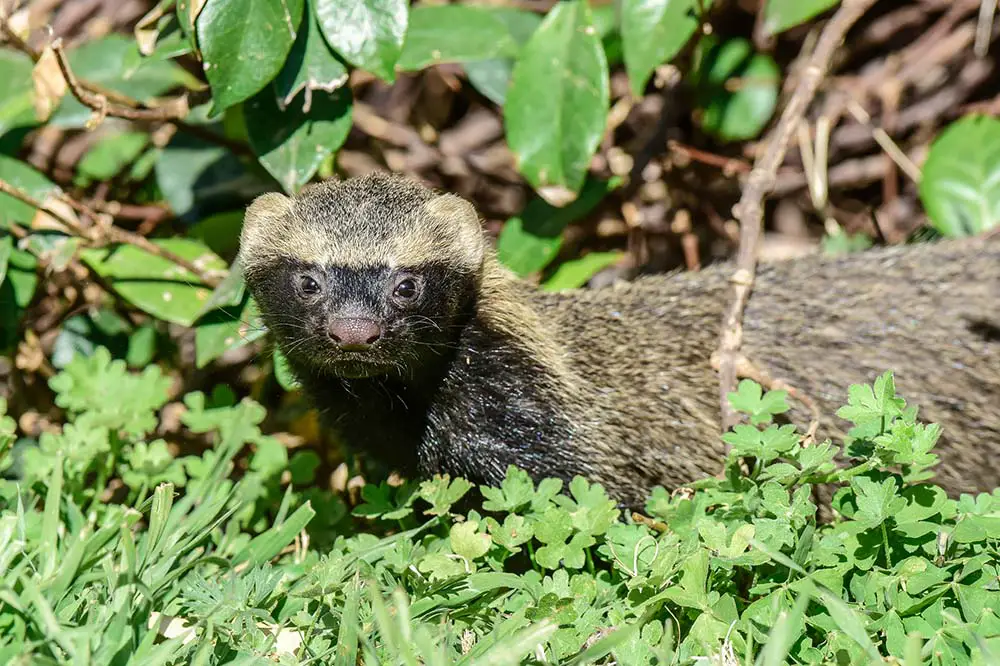
Left: Greater grison | Vladislav T. Jirousek/Shutterstock & Right: Lesser grison in the Pampas, Argentina | Foto 4440/Shutterstock
04 Guloninae | Wolverine & Martens
Guloninae contains 8 species of marten, which look very similar to weasels, the gigantic wolverine and several other unique species including the tayra and the fisher. The wolverine is the largest land-dwelling mustelid (30kg / 66lbs & 1.05m / 41in) and although they are still relatively small in comparison to their prey, they have been known to take down large ungulates five times their size including reindeer, wild sheep and even moose. They often do this by trapping their prey in the snow where, being much larger, the ungulates become stuck and are no match for the lighter, more aggressive wolverine.
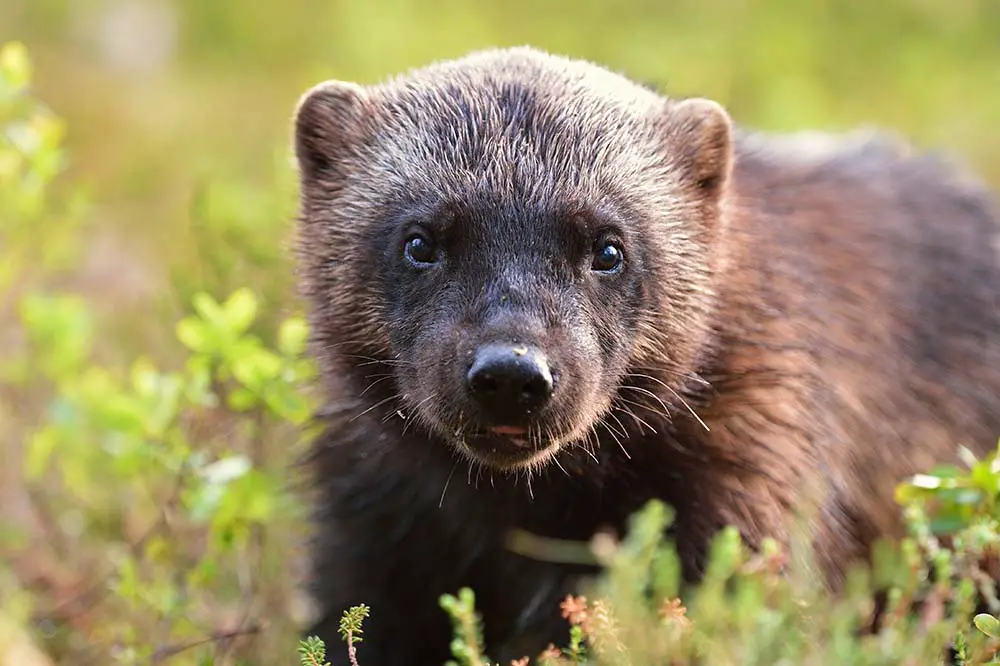
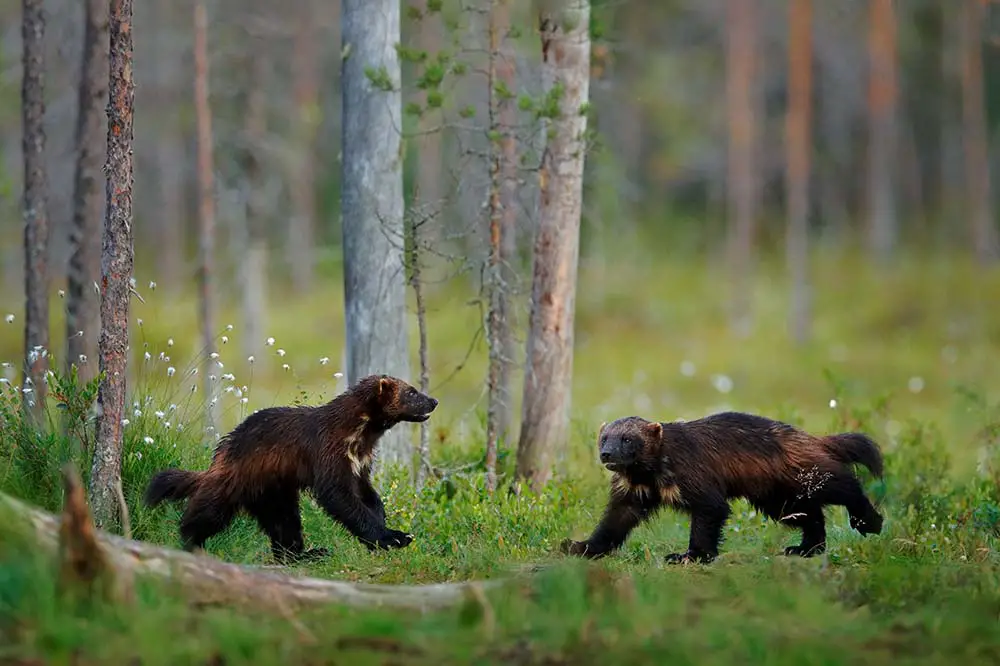
Left: Wolverine portrait | Erik Mandre/Shutterstock & Right: Pair of wolverines in the taiga | Ondrej Prosicky/Shutterstock
The 8 species of marten are all contained within the Martes genus. Their combined range spans much of the Northern Hemisphere and stretches into Southeast Asia where a particularly colourful species is found. The yellow-throated marten, unsurprisingly, displays a yellow throat with a beautiful gradient that turns to a dark brown or black towards their hind legs and tail. Like many mustelids, these cute-looking carnivores will take on much larger prey and have been known to bring down the fawns of larger ungulates such as elk.
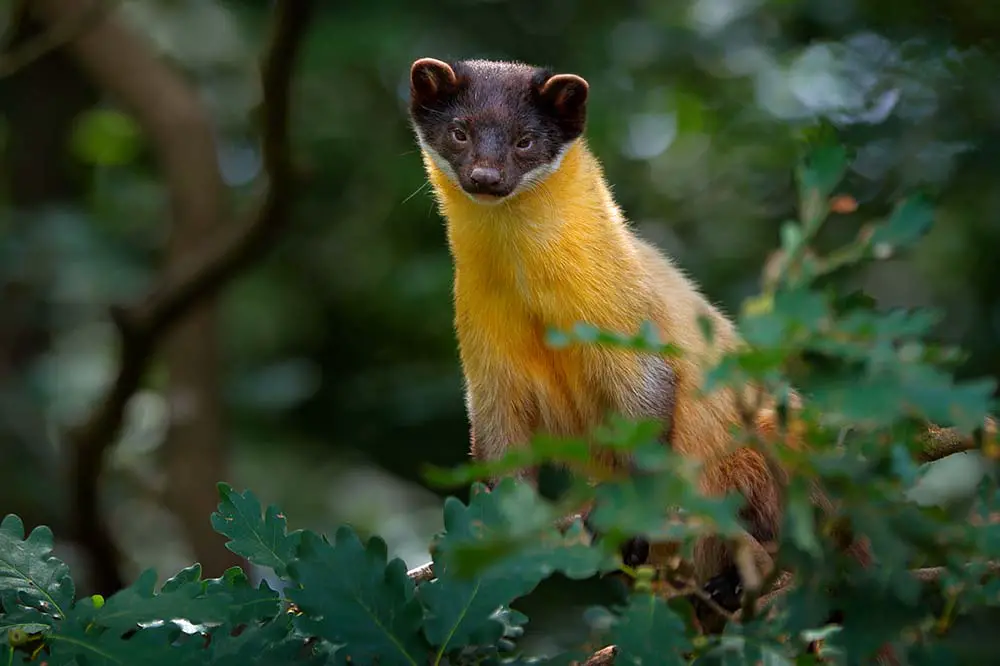
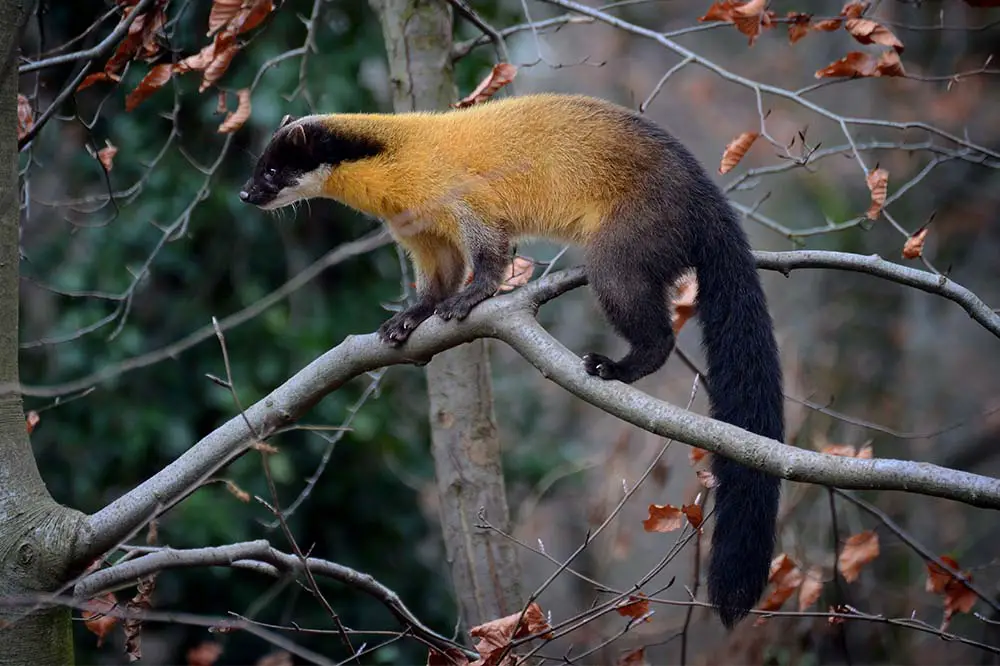
Left: Yellow-throated marten, Chitwan National Park, China | Ondrej Prosicky/Shutterstock & Right: Yellow-throated marten showing their beautiful colour gradient | Wirestock Creators/Shutterstock
05 Helictidinae | Ferret badgers
Helictidinae contains a single genus and six species of ferret badger and figuratively speaking, bridges the gap nicely between the weasel-like mustelids of the previous chapters and the badger-like mustelids of the next. Collectively, they are found in China and Southeast Asia.
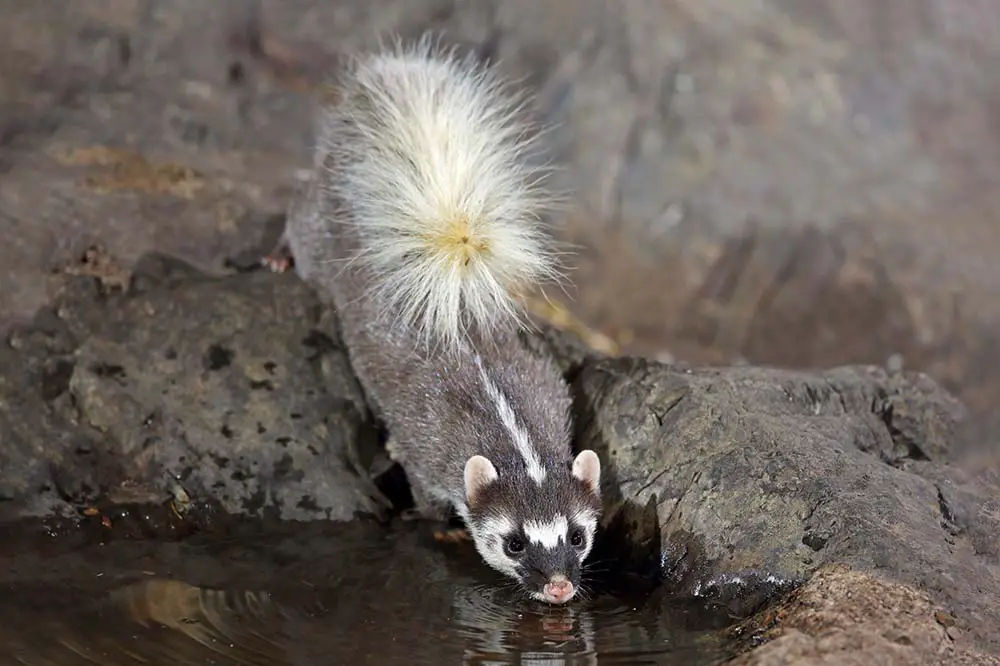
06 Melinae | European Badger & Hog Badger
The species of Melinae are split between two genera, which can be termed generally as badgers and hog badgers. Regular badgers have a gigantic range being found throughout most of Eurasia, whereas hog badgers are located solely in east and southeast Asia. Weighing up to a burly 16.683kg (36.779lbs) the European badger is the United Kingdom’s largest land predator! Their primary prey is earthworms, which they dig ferociously for!
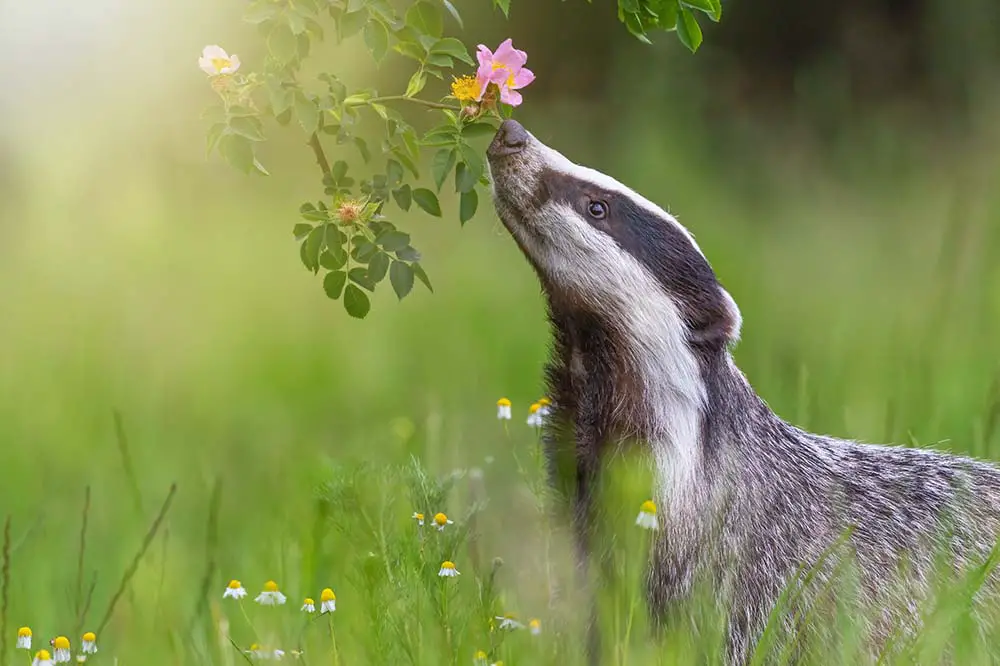
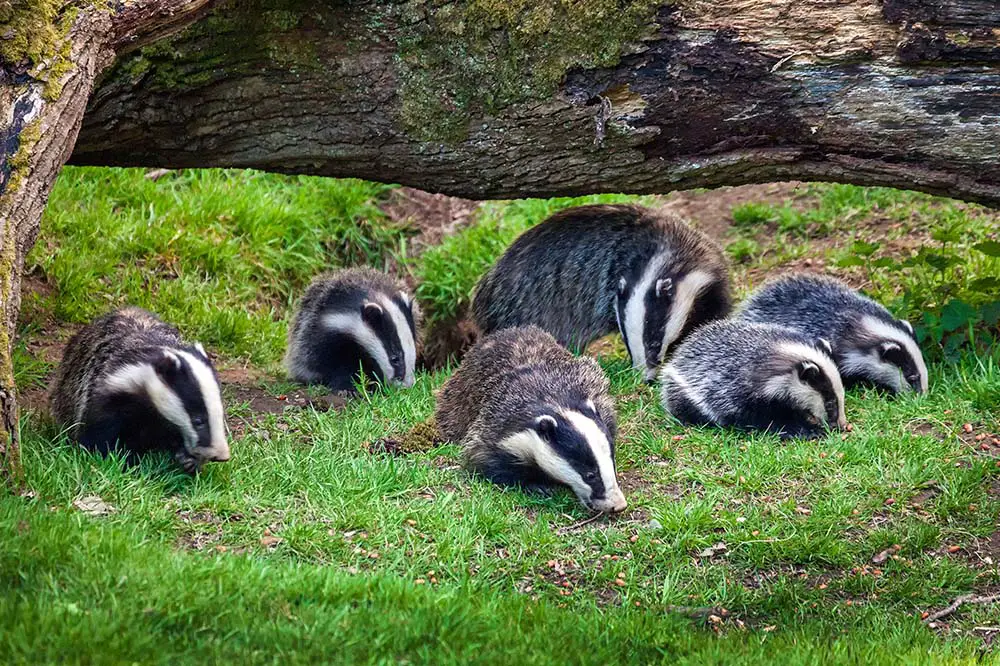
Left: European badger sniffing flowers! | Frank11/Shutterstock & Right: Badger sow and cubs | Tony Baggett/Shutterstock
Badgers are highly social by nature, which is unusual for mustelids, and live in groups that usually number around 6 but can surpass 20. They live in underground burrow systems called setts and are nocturnal or crepuscular, being most active at dusk or dawn. The Japanese badger is slightly smaller and exhibits a lighter coat. Hog badgers are also similar but have elongated snouts and lighter claws.
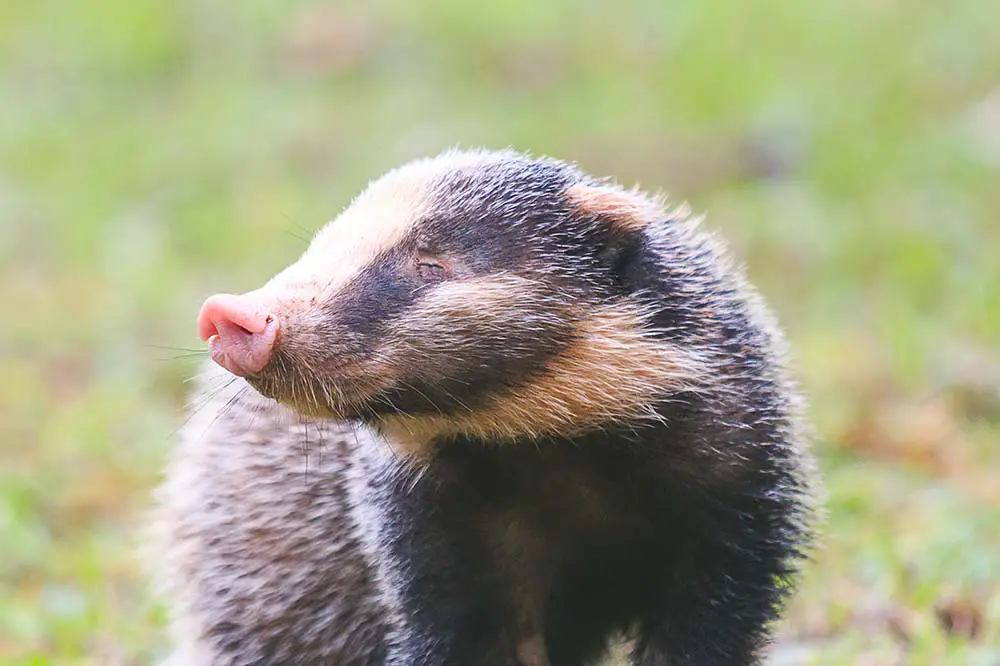
07 Mellivorinae | Honey Badger
Mellivorinae contains a single species, the honey badger also known as the ratel. They have a large range being found throughout much of Africa, the Arabian Peninsula, South Asia and a small region east of the black sea. Although they are named so for their love of honey and bee larvae, they are voracious predators and most of their diet is made up of small mammals or snakes depending on the season. Specifically, they are known to take on highly venomous snakes such as cape cobras and horned adders. Honey badgers are able to prey on these deadly reptiles having evolved to develop a resistance to the toxicity of their venom. This is similar to mongoose, who also eat snakes and look like a mustelid but are not part of this family.
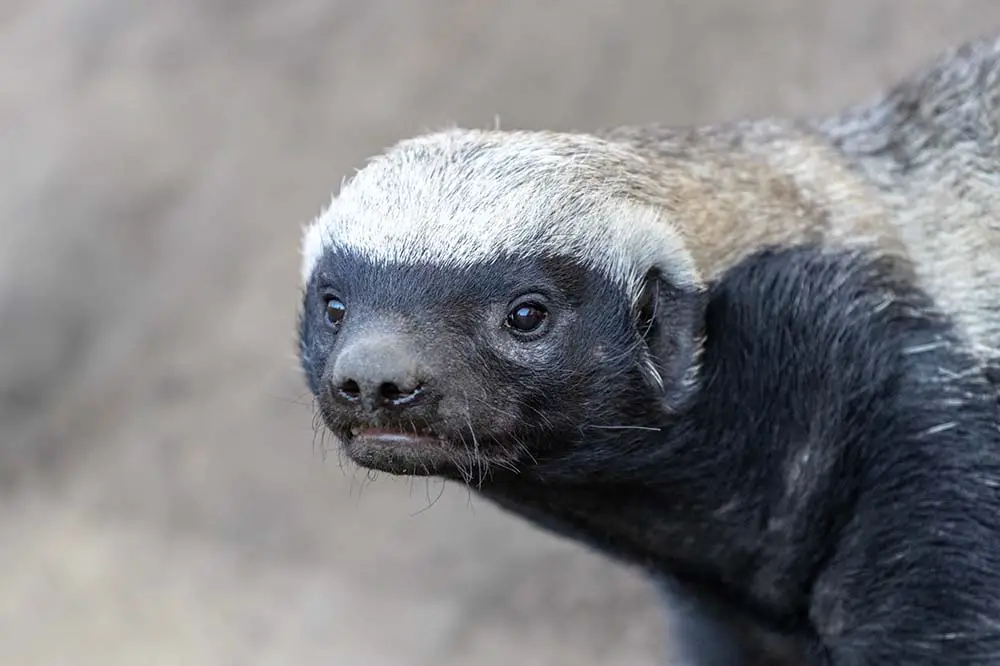

Left: Honey badger portrait | LM Gray & Right: Honey badger hunting in Krüger National Park, South Africa | Gergo Nagy/Shutterstock
08 Taxidiinae | American Badger
The American Badger is also contained within its own monotypic genus, Taxidiinae. In terms of its evolutionary path, this species and genus are the most basal; a term referring to the proximity to the root of the family. Mustelids are thought to have split from the members of Procyonidae around 29 million years ago, with the rest of Mustelidae splitting from the American badger around 18 million years ago. Like the European badger, this species has a white line extending from their back and onto their face although this is much less pronounced on the American badger. These mustelids are fossorial predators, those adapted to digging, and prey mostly upon rodents such as gophers, prairie dogs, kangaroo rats and pika. The American badger usually mates in the summer or early fall but won’t give birth until around March and April. Their young are called cubs and usually stay with their mother until around 5-6 months old.
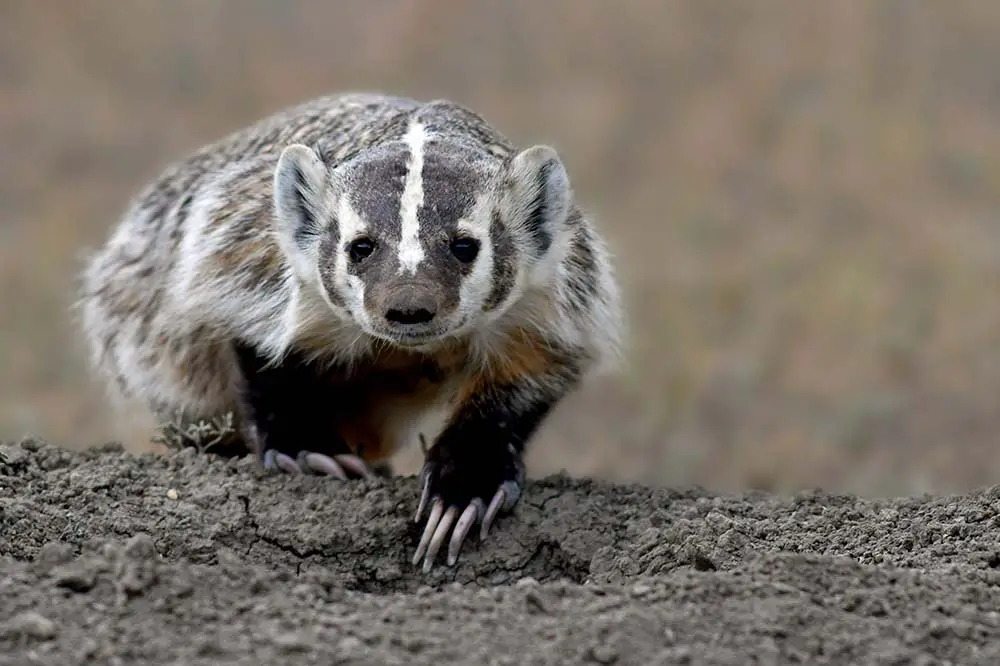
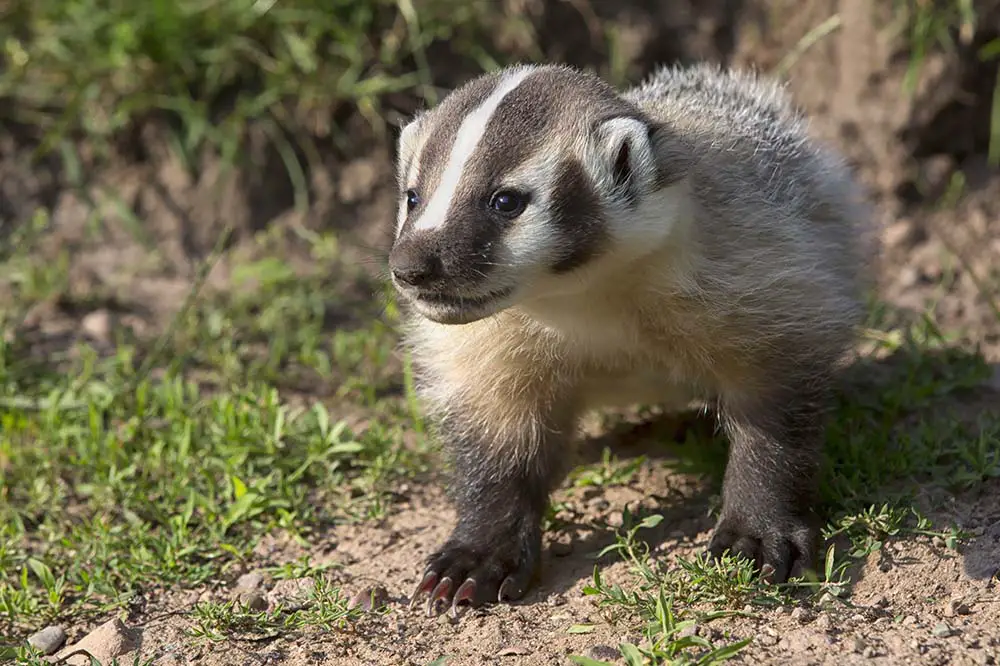
Left: American Badger at a prairie dog burrow | Lev Frid/Shutterstock & Right: Young American badger | critterbiz/Shutterstock
09 Procyonidae | Racoons, Olingos & Coatis
The closest relatives to the mustelids are the members of the Procyonidae, a family that contains 5 genera and 13 species such as the kinkajou, raccoons, olingos and coatis. Like the honey badger, the kinkajou is also known to raid the nests of bees and is sometimes referred to as the honey bear. They are found in the tropical forests of Central and South America where they feast mainly on fruit but, being carnivores, will also eat small mammals. Raccoons are omnivores and although they will feast on both plant matter and animals such as invertebrates, they have an unfortunate, although well deserved, reputation for pinching our trash. These masked bandits weigh no more than around 23lbs (10.5kg) and have dark patches surrounding their eyes, similar to that of the raccoon dog (aka Tanuki!), although they are not related.
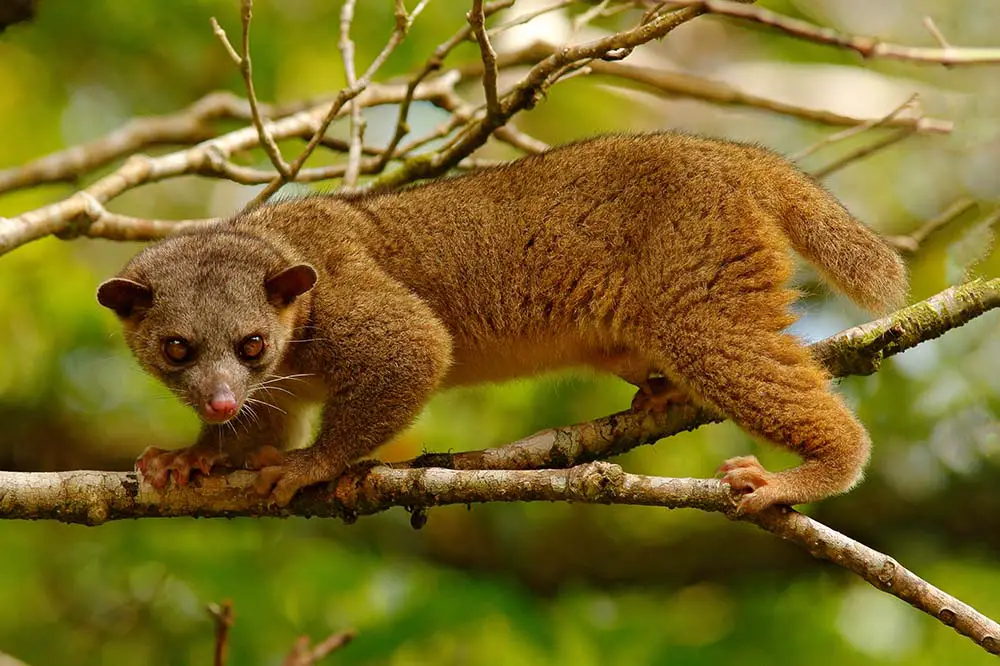
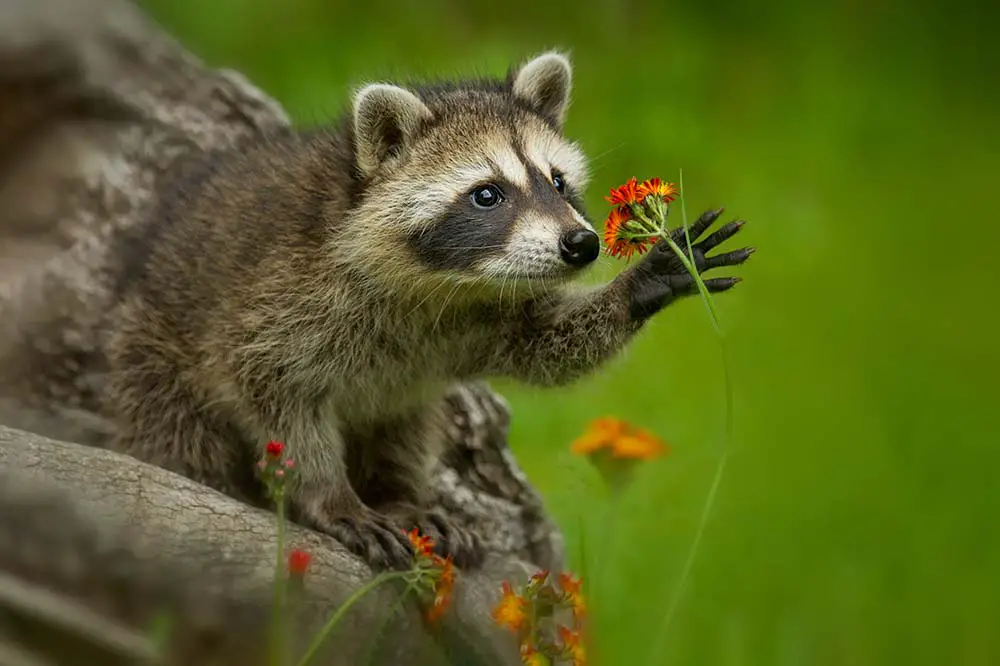
Left: Kinkajou in Costa Rica | Ondrej Prosicky/Shutterstock & Right: Raccoon in Minnesota | Agnieszka Bacal/Shutterstock
There are 4 species of olingo, which look very similar to the kinkajou. They are also arboreal and nocturnal and also live in the tropical forests of Central and South America and have a similar range to coatis who are the last member of this family that we’ll discuss. There are four species of coati with the white-nosed coati, who live mainly on the North American continent and the South American coati being the most common. In addition to both tropical and temperate forest coatis are found in grassland and more arid ecosystems.
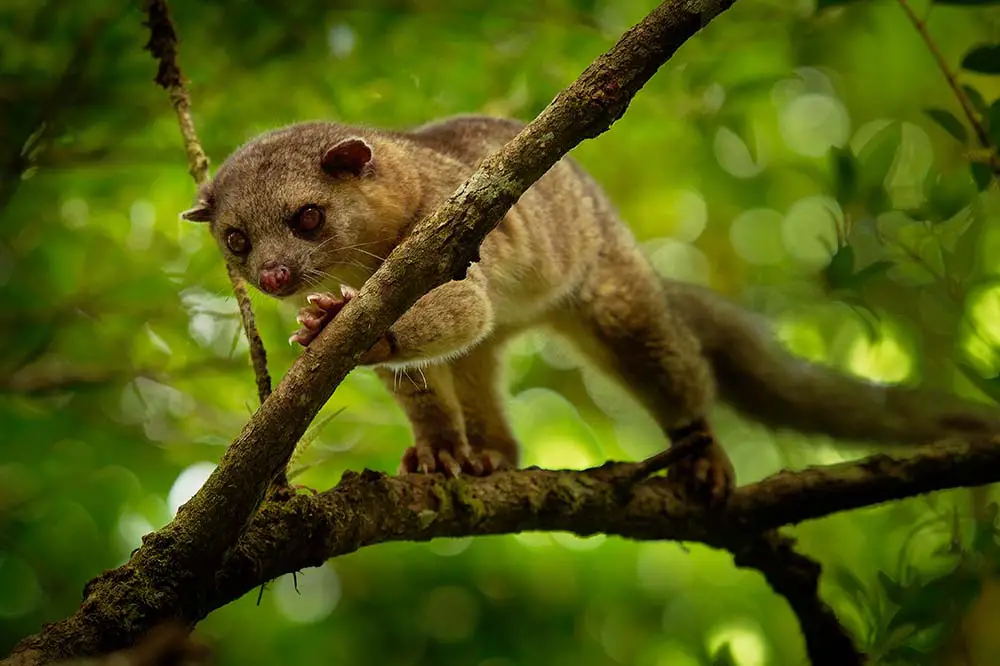
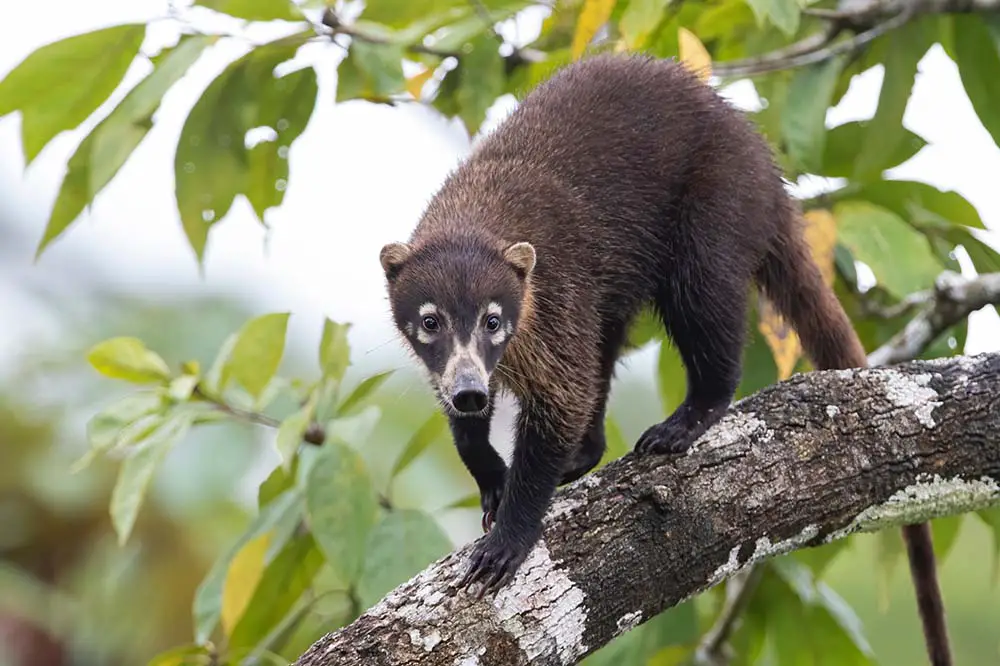
Left: Bushy-tailed olingo | Martin Pelanek/Shutterstock & Right: White-nosed coati | Jim Cumming/Shutterstock
10 Ailuridae | Red Pandas
The next most distant relatives to the mustelids are contained in the Ailuridae family, which features only 1 extant genus and 2 species most commonly referred to as Red pandas. These creatures, who are said to resemble bears, weigh no more than 14lbs (13.7lbs / 6.2kg) and have a very unique appearance, sporting a black belly and legs and a majestic dark red back and face with white highlights. The red panda is found throughout the Himalayas and south-central China where they live a mostly arboreal and solitary existence. Although they are contained within the same clade, they are not closely related to the giant panda, rather their name derives from the Nepali word “Nigalya ponya” which means “eater of bamboo.”
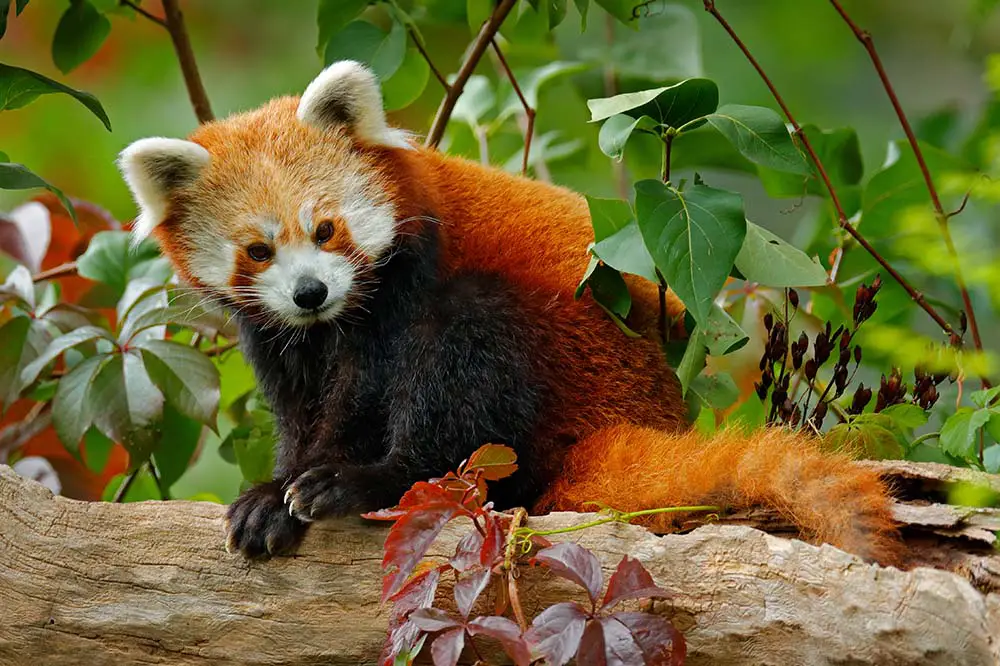
11 Mephitidae | Skunks
Commonly referred to as stink badgers, skunks are members of the Mephitidae family, which contains 4 genera and 12 species. They are found in three general areas; spotted skunks are found on the North American continent along with striped and hooded skunks. Hog-nosed skunks are also found in North America and also in South America. Stink badgers are found on the other side of the world, most commonly on the islands of Borneo, Sumatra and Java.
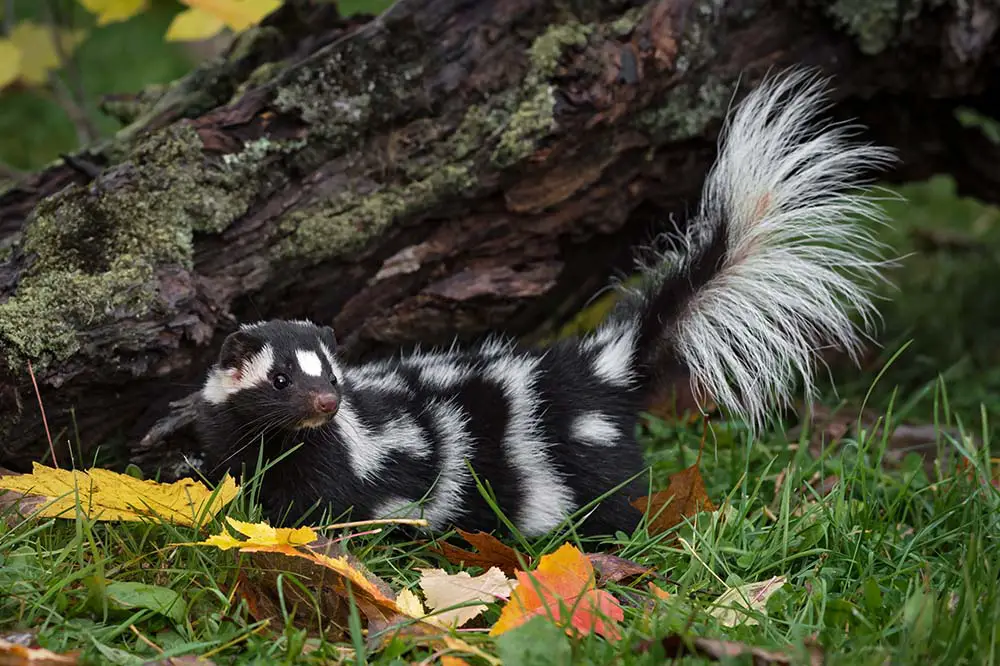
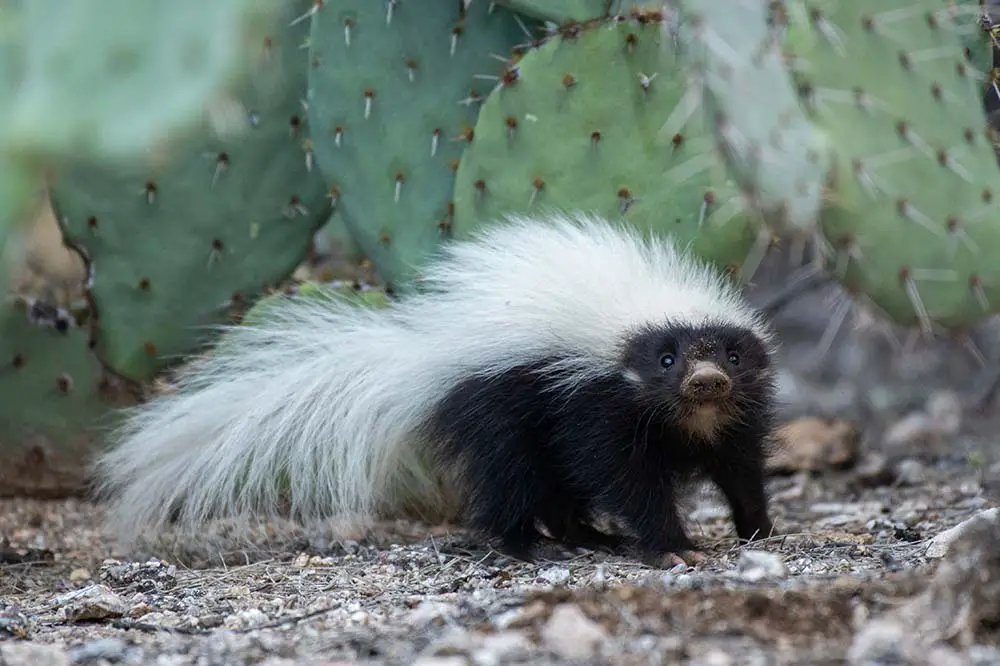
Left: Eastern spotted skunk | Holly Kuchera/Shutterstock & Right: Young hog-nosed skunk in Bear Canyon near Tucson, Arizona | Sean R. Stubben/Shutterstock
Spotted skunks display a very interesting fur pattern that can sometimes look like stripes but differ considerably from striped skunks whose stripes are much more clearly defined. They are perhaps most famous for their scent glands, which are used to deter predators. These glands are much more developed than the members of Mustelidae and it is thought the reason that stripes of the skunk terminate on either side of their tail is to warn predators of the glands, which are positioned on either side of the anus.
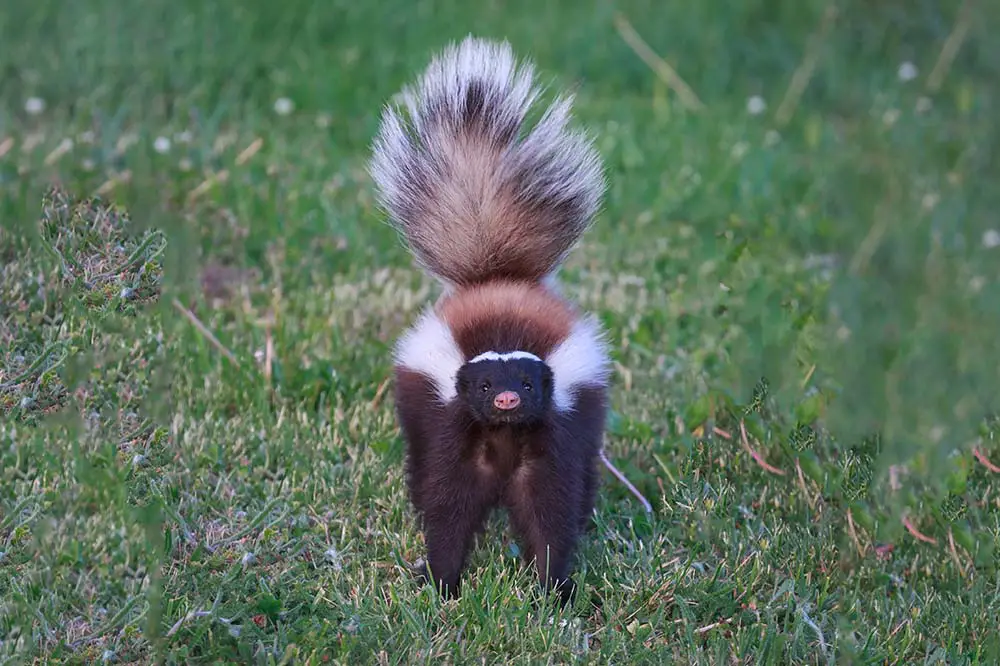
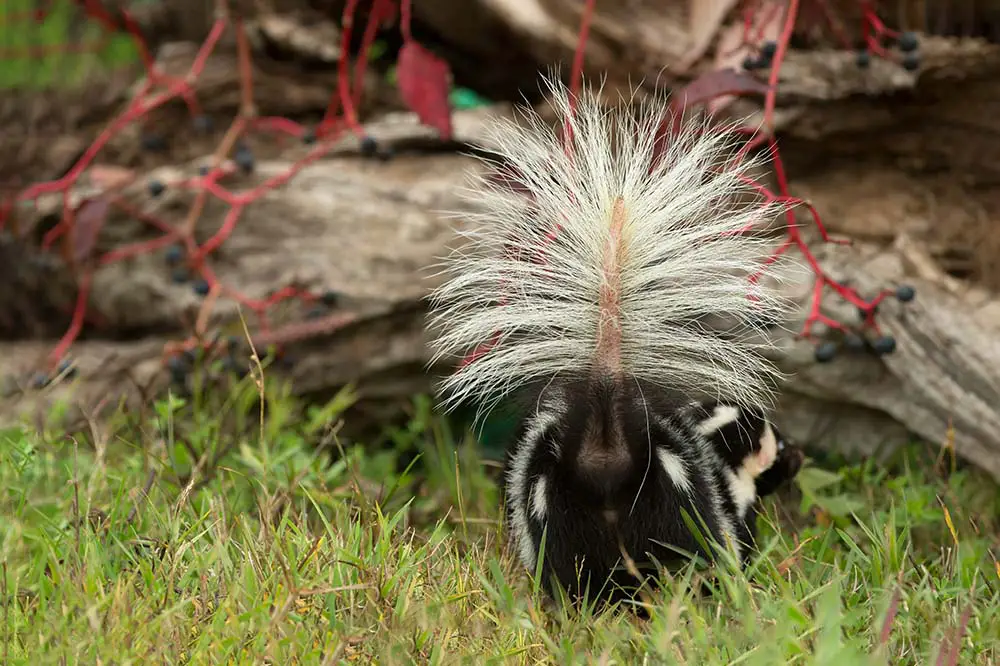
Left: Striped Skunk | sunsinger/Shutterstock & Right: Eastern spotted skunk in defensive posture | Agnieszka Bacal/Shutterstock
Sources & Further Reading
Animal Diversity, Wikipedia, Encyclopedia Britannica, Musteloidea Taxonomy, Mustelids, Mustelidae, Type Specimens, Winter Colour Change, Sea Otters, Greater vs Lesser Grison, Largest Mustelids, Wolverine Moose Kills, Badger Diet, European Badger, Badgers, Hog Badger Range, Honey Badger Venom Resistance, Honey Badger Aggression, American Badger Behaviour, American Badger Life Cycle, The Red Panda, Red Panda Name & Skunk Facts
